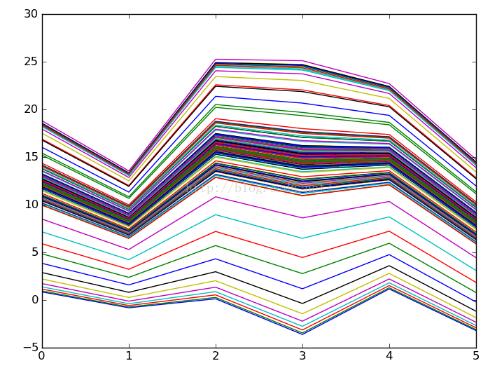溫馨提示×
您好,登錄后才能下訂單哦!
點擊 登錄注冊 即表示同意《億速云用戶服務條款》
您好,登錄后才能下訂單哦!
本文實例為大家分享了python實現梯度下降法的具體代碼,供大家參考,具體內容如下
使用工具:Python(x,y) 2.6.6
運行環境:Windows10
問題:求解y=2*x1+x2+3,即使用梯度下降法求解y=a*x1+b*x2+c中參數a,b,c的最優值(監督學習)
訓練數據:
x_train=[1, 2], [2, 1],[2, 3], [3, 5], [1,3], [4, 2], [7, 3], [4, 5], [11, 3], [8, 7]
y_train=[7, 8, 10, 14, 8, 13, 20, 16, 28,26]
測試數據:
x_test = [1, 4],[2, 2],[2, 5],[5, 3],[1,5],[4, 1]
# -*- coding: utf-8 -*- """ Created on Wed Nov 16 09:37:03 2016 @author: Jason """ import numpy as np import matplotlib.pyplot as plt # y=2 * (x1) + (x2) + 3 rate = 0.001 x_train = np.array([[1, 2], [2, 1],[2, 3], [3, 5], [1, 3], [4, 2], [7, 3], [4, 5], [11, 3], [8, 7] ]) y_train = np.array([7, 8, 10, 14, 8, 13, 20, 16, 28, 26]) x_test = np.array([[1, 4],[2, 2],[2, 5],[5, 3],[1, 5],[4, 1]]) a = np.random.normal() b = np.random.normal() c = np.random.normal() def h(x): return a*x[0]+b*x[1]+c for i in range(100): sum_a=0 sum_b=0 sum_c=0 for x, y in zip(x_train, y_train): for xi in x: sum_a = sum_a+ rate*(y-h(x))*xi sum_b = sum_b+ rate*(y-h(x))*xi #sum_c = sum_c + rate*(y-h(x)) *1 a = a + sum_a b = b + sum_b c = c + sum_c plt.plot([h(xi) for xi in x_test]) print(a) print(b) print(c) result=[h(xi) for xi in x_train] print(result) result=[h(xi) for xi in x_test] print(result) plt.show()
運行結果:

結論:線段是在逐漸逼近的,訓練數據越多,迭代次數越多就越逼近真實值。
以上就是本文的全部內容,希望對大家的學習有所幫助,也希望大家多多支持億速云。
免責聲明:本站發布的內容(圖片、視頻和文字)以原創、轉載和分享為主,文章觀點不代表本網站立場,如果涉及侵權請聯系站長郵箱:is@yisu.com進行舉報,并提供相關證據,一經查實,將立刻刪除涉嫌侵權內容。